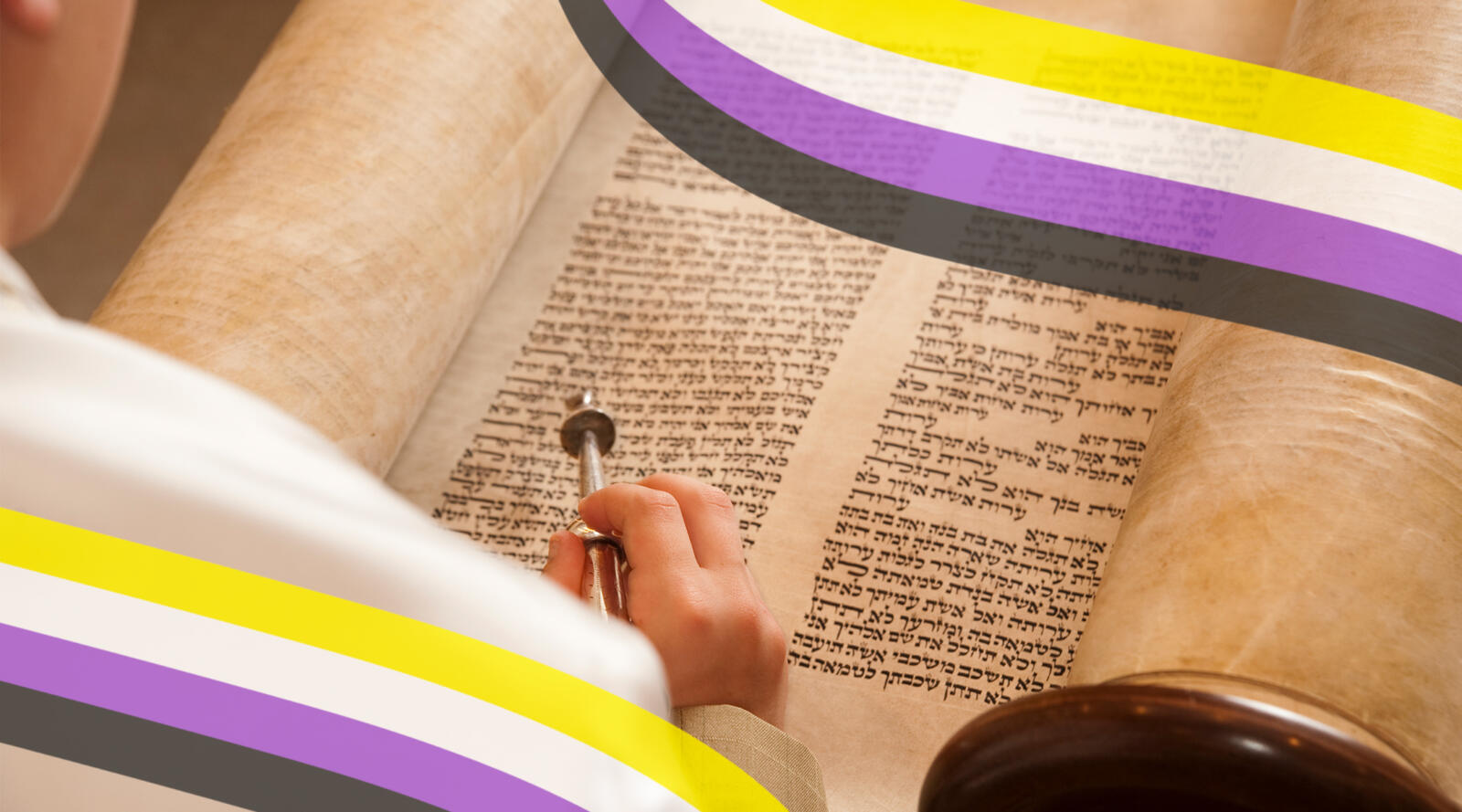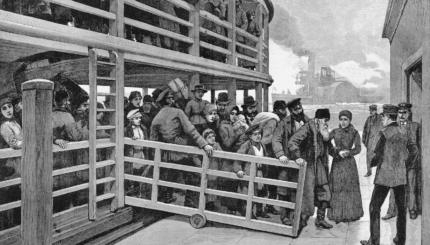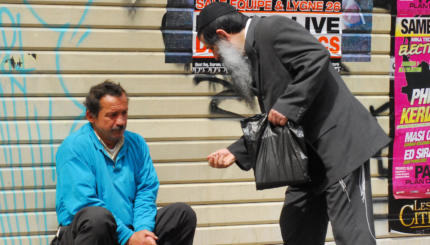The bar/bat mitzvah (also sometimes referred to in the plural as b’nai mitzvah) is a rite of passage celebrating a child having become an adult in the eyes of the Jewish community. Traditionally celebrated on a Shabbat morning around the time a girl turns 12 or a boy turns 13, the milestone has historically been marked by the chanting of scripture, being called to the Torah for an aliyah, a short d’var Torah and a festive meal. But the rite of passage is also gendered in many respects, which has posed challenges as growing numbers of young people choose not to identify as either male or female or with the gender they were assigned at birth.
What do you call it?
Crafting a celebration appropriate to such teenagers is largely a question of vocabulary.
In most non-Orthodox synagogues, there is little to distinguish the rites of passage afforded to boys and girls. The standard parts of the celebration — being called to the Torah for an aliyah, leading services, delivering a d’var Torah and engaging in a charitable project — are available equally to youth of all gender orientations. But since Hebrew is a gendered language, the words used to describe the ceremony, along with core pieces of the ritual service itself, make no allowance for youths who don’t identify as male or female or whose genders are fluid.
Many congregations now use the term b’nai mitzvah as an inclusive, gender-neutral descriptor of this milestone moment. More recently, some synagogues have begun referring to the celebration as a b’mitzvah, b-mitzvah or b*mitzvah. If a child does identify as a specific gender, many communities will still allow them to celebrate a bar mitzvah or a bat mitzvah regardless of the gender they were assigned at birth. Others have eschewed all gender-specific terms for the celebration. Keshet, a nonprofit supporting LGBTQ equality in Jewish life, also suggests these alternatives: simchat mitzvah (celebration of mitzvah), kabbalat mitzvah (receiving mitzvah) and brit mitzvah (covenant of mitzvah).
With your help, My Jewish Learning can provide endless opportunities for learning, connection and discovery.
Being Called to the Torah
Central to most b’nai mitzvah celebrations is the Torah service, in which the celebrant will often be called to the Torah for an aliyah and chant a portion from the Torah. Much of the language here is gendered. The common practice has long been to call individuals up with the Hebrew words ya’amod (“he shall rise”) or ta’amod (“she shall rise”) and identify them by their Hebrew names, which includes identifying them as the ben (“son”) or bat (“daughter”) of their parents.
A widely cited 2022 paper adopted by the Conservative movement’s Committee on Jewish Law and Standards suggested alternative ways of doing this to honor the gender diversity in the Jewish community. In place of the gendered ya’amod/ta’amod, the paper suggests the phrase na la’amod, which means simply “please stand.” And in place of the language indicating the honoree as someone’s son or daughter, the paper suggests using mibeit (“from the house of”) or l’veit (“of the house of”), followed by the family name. A gender-neutral way of calling someone to the Torah might thus be:
Na la’amod _______ mibet ________
Please stand ______ from the house of ________
Alternatively, some may choose to use modern non-gendered Hebrew variations on the standard gendered son of/daughter of language intrinsic to traditional Hebrew. The Nonbinary Hebrew Project, a free online resource that has created a way to conjugate Hebrew nouns and verbs in non-gendered ways, suggests the word bet (as opposed to ben or bat) as a non-gendered word for “child of.”
Other Issues
While questions of language are likely to be the primary area of concern in crafting a gender-neutral b’nai mitzvah, they are not the only ones. Giving gifts is also a common part of the celebration, and these are often gendered — kiddush cups for boys and Shabbat candlesticks or Jewish-themed jewelry for girls. Attendees might be asked instead to make a donation in the celebrant’s honor.
Further resources:



